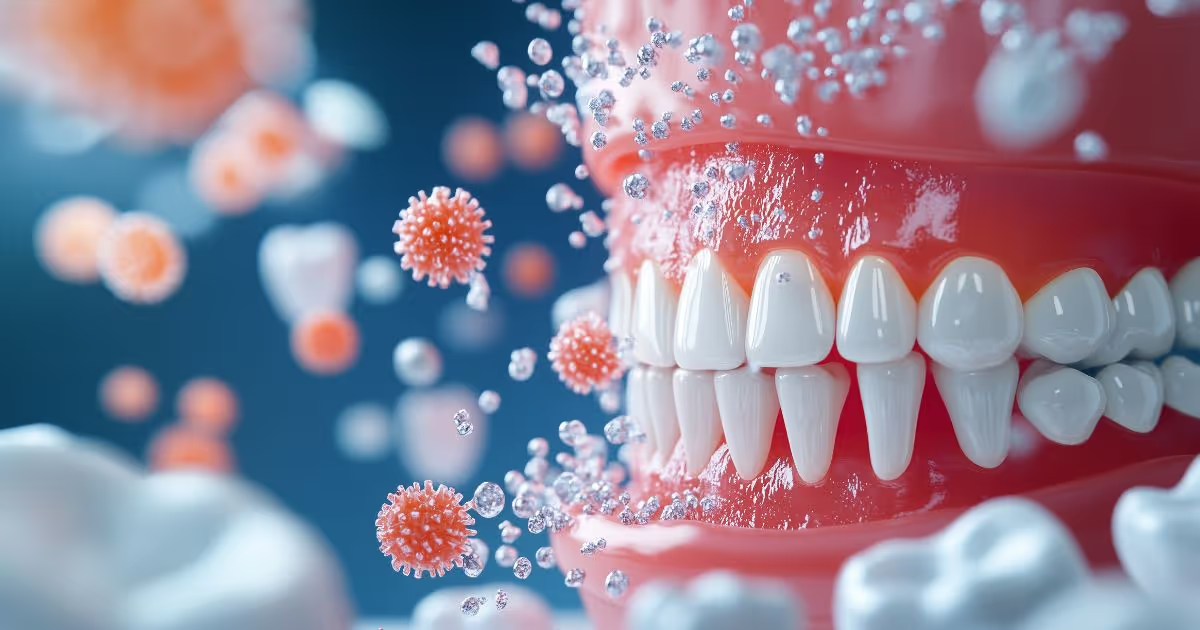Oral Bacteria: The Culprits Behind Tooth Decay, Gum Disease, and Other Oral Health Problems
Tooth decay, gum disease, gingivitis, and other oral health issues are traceable back to tiny living organisms that many people overlook: bacteria. When allowed to thrive unchecked in the mouth, these bacteria can lead to serious consequences, including tooth loss. In this article, Dr. Kat or Dr. Kanokwan Urthamapimuk will illuminate the crucial role of maintaining optimal oral health to prevent the mouth from becoming a breeding ground for these bacteria.

What Diseases Can Oral Bacteria Cause?
Tooth decay, gingivitis, and periodontitis all stem from oral bacteria. The causative bacterial agent of dental plaques is not just one species; there are many contributing to different diseases. Some bacteria cause tooth decay but not gingivitis, while others may trigger gingivitis without contributing to tooth decay. Regardless of species, all pathogenic bacterial species should be controlled or eliminated.
Brushing Well but Still Getting Cavities
Many people wonder why, despite conscientiously brushing twice a day and using dental floss and interdental brushes, they still develop tooth decay and gum inflammation. These suggest that their daily brushing routine may not be effective in removing oral bacteria, which could be due to improper brushing techniques, unsuitable dental tools, or simply because some areas in the mouth where bacteria thrive are hard to reach, forming blind spots.
How Can You Tell Where Bacteria Are Hiding?
If standard brushing fails to reach all areas, how can you identify the blind spots? Dr. Kat offers some simple self-assessment methods that anyone can try. For example, after brushing, run your tongue across the surface of your teeth; they should feel smooth, not sticky. If you cannot detect a difference, try using a cotton swab to wipe the tooth surface. If you notice a whitish or yellowish residue on the swab, it means there is residual bacterial plaque. Parents can use this method to check their children’s teeth after brushing. Alternatively, you can use a drinking straw: cut it diagonally to create a beveled tip, then lightly scrape the tooth surface to see if any bacterial plaque is coming off to reveal the spot where brushing was insufficient.
Effectively Monitor Oral Bacterial Residue with POHC
Personalized Oral Health Care (POHC) is a dental health screening program offered by the Dental Center at MedPark Hospital. This program utilizes innovative dental technology to assess brushing effectiveness through bacterial plaque staining agents. The dye adheres to bacterial dental plaque, highlighting areas not effectively cleaned. If no staining appears after applying the dye, it indicates that the patient has successfully removed bacteria from that area. The intensity of staining correlates with the quantity of bacterial plaque, with darker staining indicating higher plaque accumulation. The patient needs to improve the brushing technique to ensure optimal oral hygiene.
Here is the circumstance where the dentist plays a crucial role, providing personalized guidance on how to eliminate the stained areas. The dentist will advise on optimal cleaning techniques for heavily stained regions and recommend supplementary oral hygiene tools, such as dental floss and interdental brushes, each with specific advantages for targeting different hard-to-clean areas.
What Do the Different Colors of the Dye Staining Indicate?
- Dark purple or dark blue: Indicates long-standing bacterial plaque accumulation.
- Light pink: Represents newly formed bacterial plaque.
- Light blue: Indicates bacterial plaque that is acid-producing.
This method enables patients to understand precisely how to improve their brushing technique and which areas require extra attention. With personalized guidance from the dentist, patients can enhance their oral hygiene practices and reduce the risk of various oral health problems and diseases. It is an examination that can pinpoint the locations for effective resolution of the issue.

